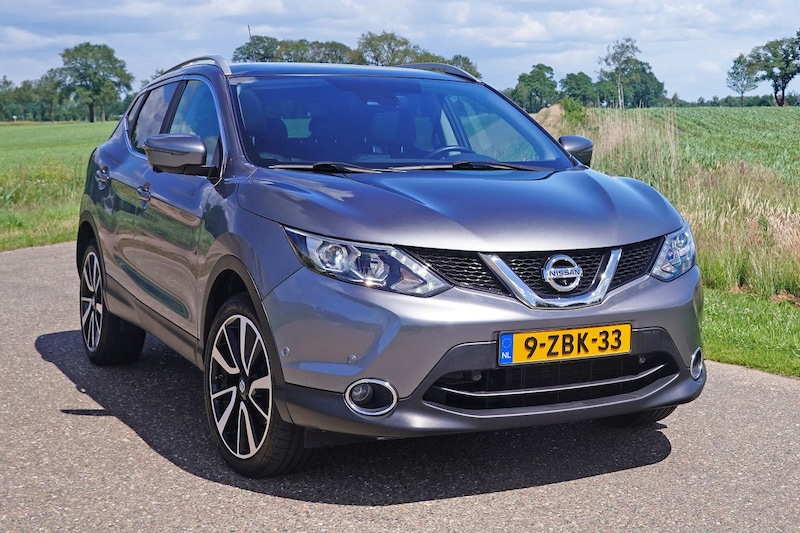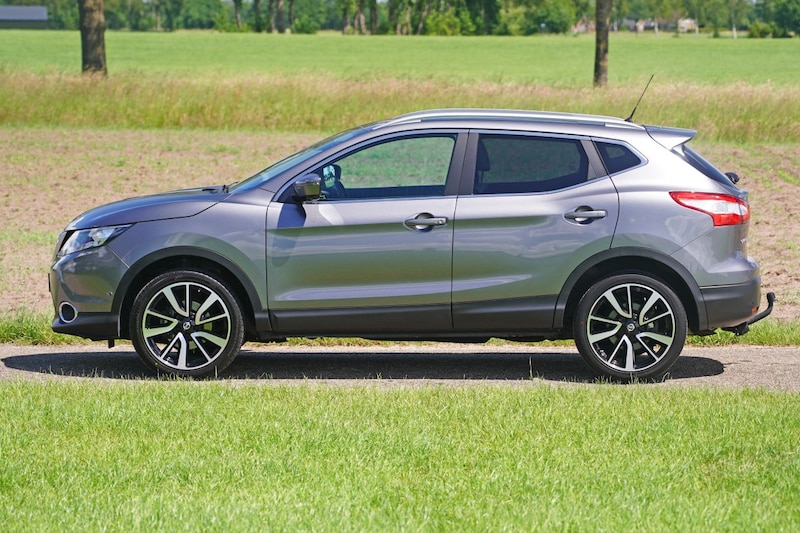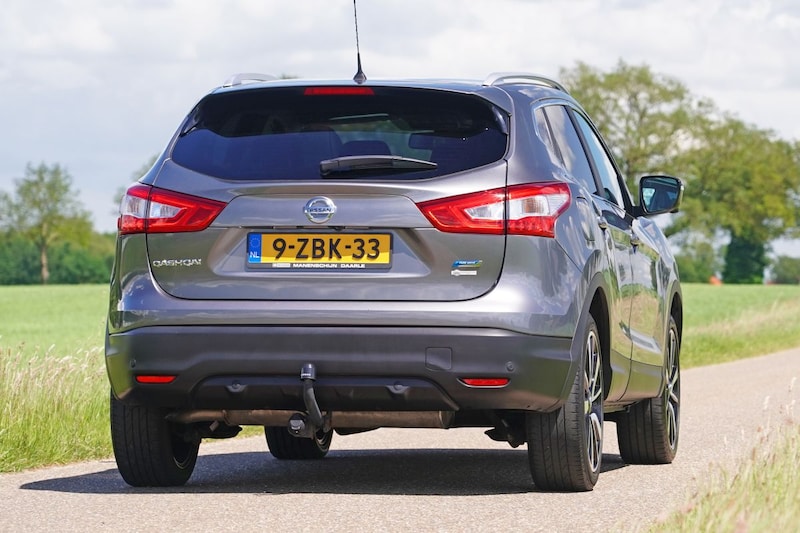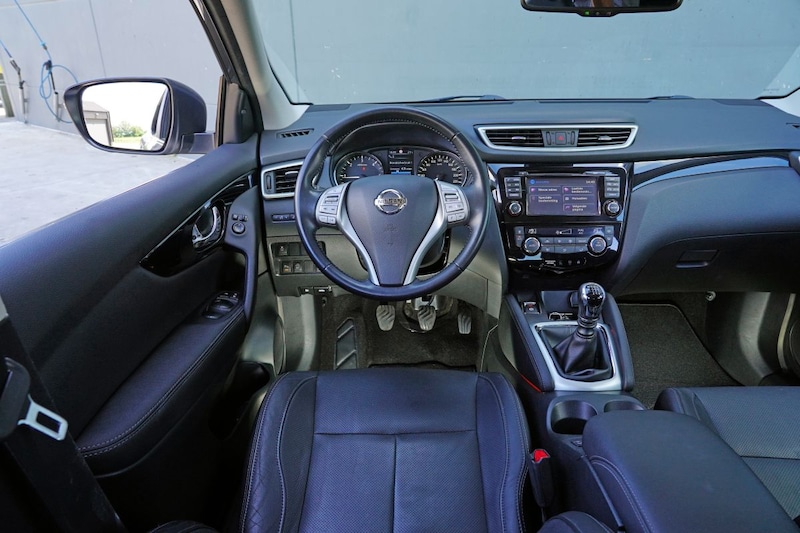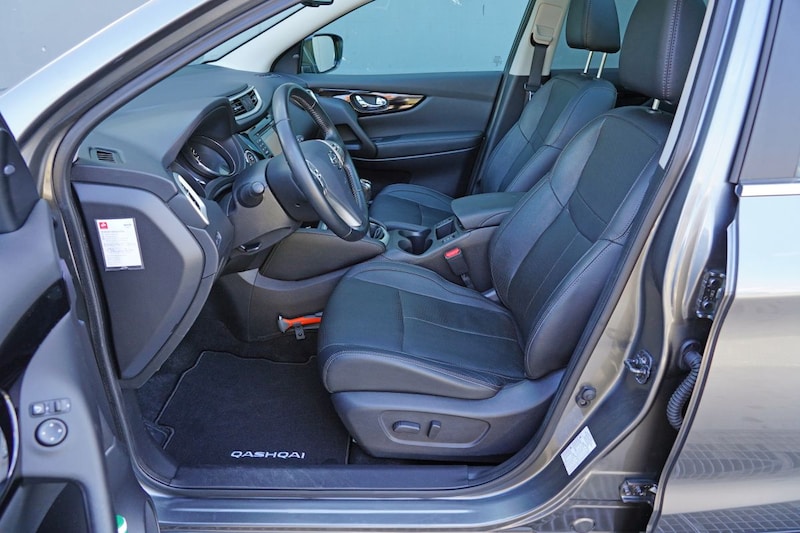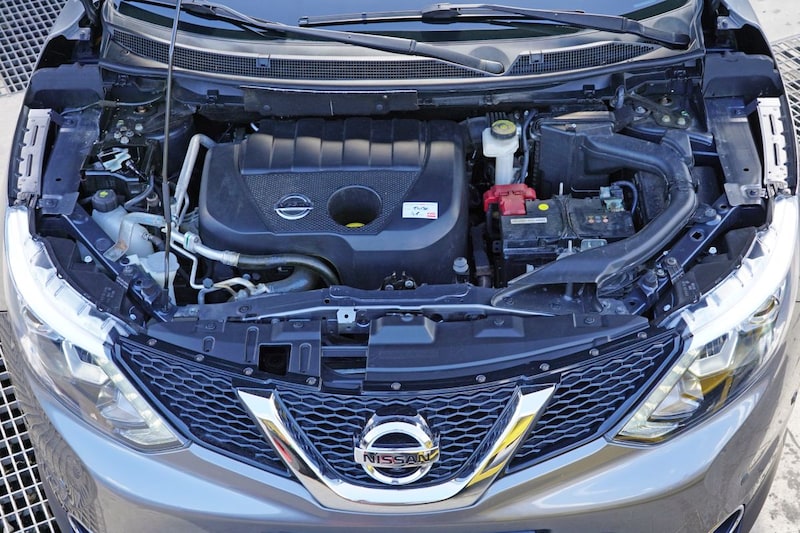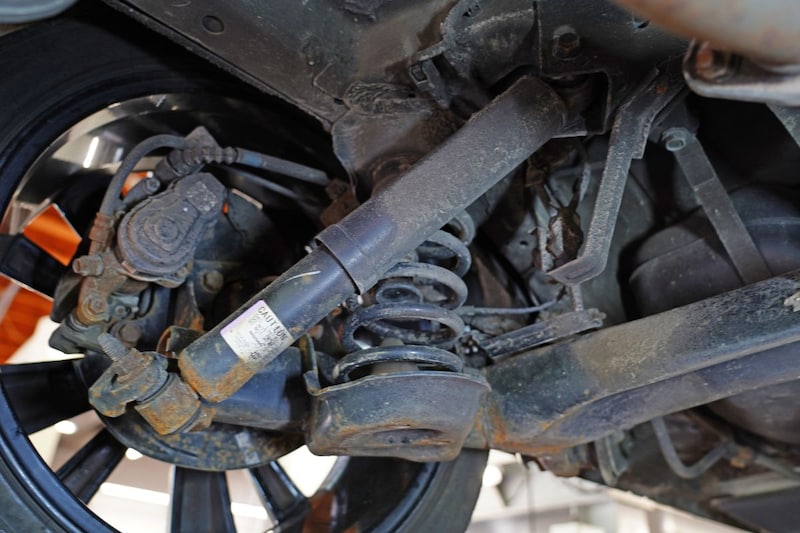Good reputation
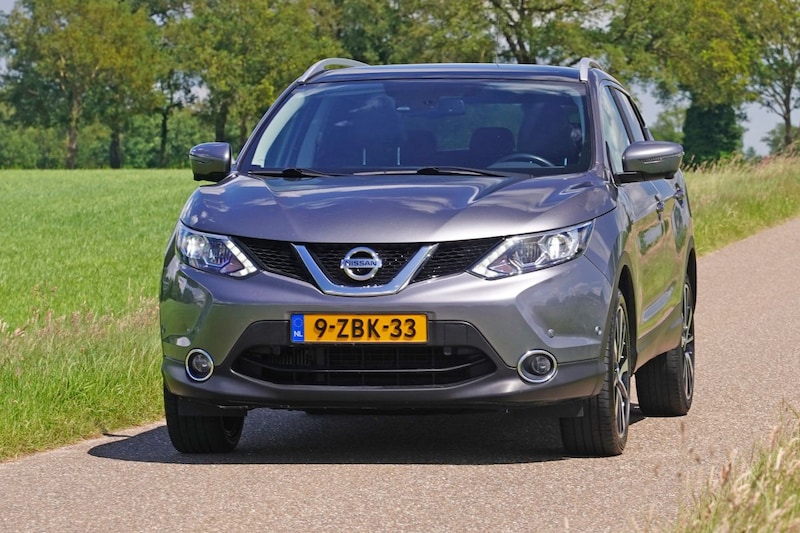

The Nissan Qashqai has been a continuous success since its arrival in 2007: it replaced two mediocre-selling models, saw and conquered. Nissan sold half a million units in Europe alone in 2015. Then it must be a good car, right?
If the high-seated, aging public has embraced one car, it’s the Nissan Qashqai. Almost immediately when Nissan introduces its latest crossover to the world, the orders pour in. Perfectly timed, the crossover is on the cusp of its big break. It is no coincidence that the Qashqai replaces the moderately selling Almera and Primera. Except from their own ranks – think of Almera, Primera and X-Trail customers – a striking number of foreign brand drivers trade in their cars.
The Qashqai, affectionately referred to as ‘QQ’, therefore has many talents that the alleged target group is enthusiastic about, with the factor ‘sitting high’ as the main argument for putting a ‘leg’ at the bottom of the purchase contract. A towbar including a bicycle carrier is sufficient to transport the bicycles with electric pedal assistance to the Veluwe. And forward: a set of mats to protect the carpet from muddy running shoes after a walk through the Geldersch Landscape.
The Qashqai is a compact crossover, so limited exterior dimensions with an interior that is as spacious as possible. And for those who think that’s not enough, Nissan has the Qashqai+2 in store. It has a 135 millimeters longer wheelbase with a 210 millimeters longer body and a third row of seats. If you regularly visit muddy or snowy slopes, choose the 4WD variant.
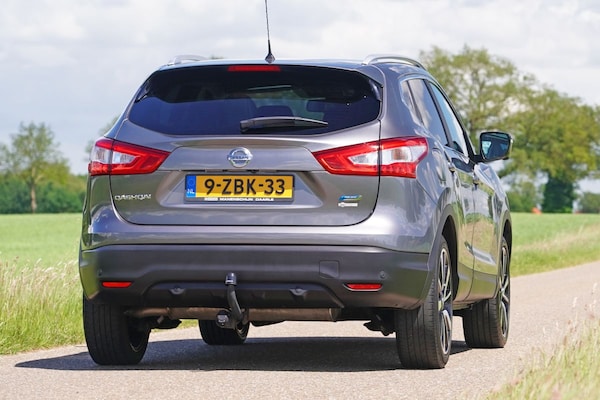
Nissan Qashqai
Good reputation
Nissan builds no less than 1.24 million units between 2007 and 2013 before generation two takes over. In two years, Nissan will build 500,000 at the British factory in Sunderland and increase the total to 3.3 million, until the third series is in showrooms from 2021.
With the first generation Qashqai (internal J06), Nissan is building a good reputation. It is one of the first fruits of the alliance between Renault and Nissan. The Mégane also uses this so-called C platform. The synergy continues with the successor: the internal J11 called Qashqai shares its chassis and CMF-CD bottom group with the Renault Kadjar. The second generation is again a bull’s eye commercially in the midst of a silted competitive field. It is praised for its increased space, improved handling and lower fuel consumption. As with the first model series, relatively minor problems usually haunt him. However, there are also some bigger issues. We check this on the basis of a 2014 copy with 155,000 kilometers of experience that we find at Nissan dealer and specialist Manenschijn in Daarle Overijssel.
Don’t expect hyperdynamic handling, although it is remarkably stable for a high-seater. But that is entrusted to Nissan. The combination diesel and manual gearbox is a happy one. There is plenty of pulling power, even at low revs. A Qashqai is a utility car, even though most owners are quite careful with it. Despite this, you will find signs of use as you walk around the car. So check for poorly repaired damage. Because many Qashqais are equipped with a tow bar, scratches and dents in the rear bumper are no exception. This also applies to the interior. You can immediately see whether the previous owner has taken care of it or not. A look at the hard plastics in the lower regions reveals whether or not the manners were sloppy.

Nissan Qashqai
Distribution Ailments
The most serious problems with this J11 generation are of a motor nature: with the smallest block, the 1.2-litre four-cylinder DIG-T, which was developed by Renault. As can also be seen from competitors, the small and relatively heavily loaded engine suffers from distribution ailments. On the one hand, the stretching chain that causes rattling noises, on the other hand, due to the jammed camshaft adjustment. Oil consumption is not strange for this engine either. Contamination of the intake valves is another issue, typical of direct injection engines. Holding back and stuttering are also all part of it. Some ‘reviewers’ have a fresh power source installed at 100,000 km.
According to Manenschijn, the diesel engines are trouble-free as long as the maintenance intervals are observed (or preferably brought forward), long distances are driven and good quality fuel is refueled. Poor quality affects the injectors, which, due to their small tolerances, also become clogged more quickly due to internal contamination, for example from minute metal particles from the fuel pump. You notice it in the diesel air in the interior, worse start, white exhaust smoke and a glowing engine management light. The 1.5 dCi uses a timing belt with a 150,000 km replacement interval. Specialists such as Manenschijn advise customers to report every 90,000 kilometers for a new belt.
Finally, the transmission. If your potential QQ-occasion has often had a caravan behind it before, check the operation of the coupling. The rather rare CVT automatic transmission finds no favor with the specialist: the push belts wear out much too quickly. A software update hardly seems to help. Symptom is a sudden increase in speed without the accelerator pedal being actuated.
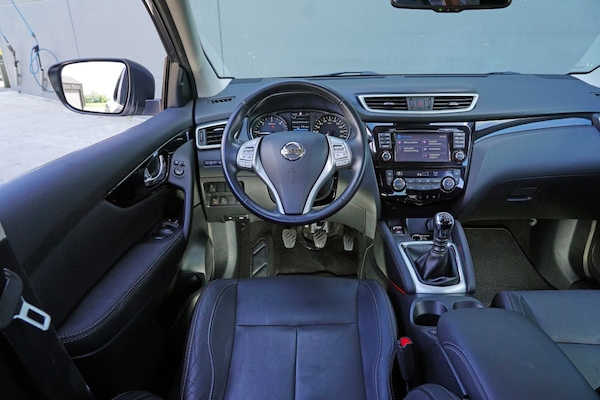
Nissan Qashqai
If you check the reviews, you will read about electronic issues. A relatively fast draining battery is the most commonly reported. Nissan has bought inferior FIAM batteries, because they often give up the ghost after a year and a half. Later Vartas do better. The dynamo also wears out, so that the battery is charged less well or not at all during a ride. In the worst case, it even discharges, causing the Qashqai to stall. A common ailment is the cooling fan that can continue to run due to a faulty relay. Over time, it can drain the battery.
There are known issues with the infotainment system. For example, it is possible that the image freezes or the sound drops out. It can even happen that the system does not turn on at all. So try all the buttons and switches. The heating system of the Qashqai also often fails to meet expectations. There are users who complain about the moderate capacity to get the interior up to temperature. Most users now find the Connect System outdated, because it lacks options such as Apple CarPlay and Android Auto.
Frozen stove
Striking is the number of reports of a smoothly failed air conditioning, especially with the early copies. Two pipes rubbing against each other cause leakage, causing the pressure to drop. Nissan has made a modification to this. It also happens that the ventilation completely stops its task as a result of a frozen stove unit. That indicates a software problem.
Speaking of which, there have also been recalls to replace the rear NOx sensor due to a possible short circuit and to modify the plastic inner shields, which could cut the brake hoses.
bottom
After our test drive, we drive the Qashqai up the four-column lift bridge for an inspection of the underside. Rust protection is in order, also with this eight-year-old copy. The peeling PVC protection at the bottom of the sill is striking: the adhesion leaves much to be desired. Brake lines do not suffer from corrosion. If complaints from the chassis are reported, they are thumping sounds from the rear. Usually it is worn shock absorbers that lose their function or the rubber bushings in the mounting. Some owners report reduced braking performance. The brake pads are rather soft, which makes them thinner quickly. An incorrectly mounted anchor plate also abrades a brake hose, resulting in brake fluid leakage. This concerns cars from before September 2016. When purchasing such a car, ask whether the necessary modification has been carried out.
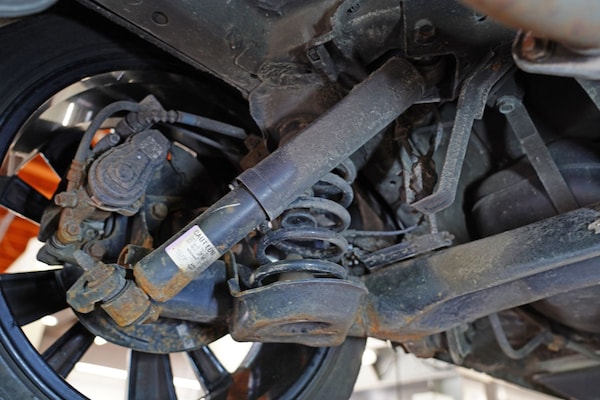
Nissan Qashqai
Normal wear and tear is also included. So inspect the knuckles, tie rods and wishbones. Creaking noises from the suspension also occur, there is little that can be done about it. Cleaning spring seats does not improve either. Furthermore, the drivetrain of the 4WD system can generate noises. With the engine running, the test can be steered to the left as far as the stop and then to the right. If this is accompanied by ‘sounding’ noises, you can point out the CV joints as suspects.
Diesel?
Users of the second-generation Qashqai are very pleased with the low fuel consumption (especially considering the dimensions and weight), the space, the comfort, the towing weight and the versatility. However, they also expect a flawless performance from a quasi-Japanese product and this QQII falls short. It is precisely the small manufacturing defects and product features that frustrate many owners, such as a refusing seat heating, broken ventilation and central locking units and rattles from the many plastic panels.
If you are in the market for a used Qashqai, give yourself a version such as the Tekna with a heavier engine and a manual gearbox. A petrol version is obvious, such as the 1.6 DIG-T. You can also put a diesel, such as the 1.5 dCi, on your shortlist, especially if he often has to tow a caravan. The higher mrb can be offset against lower consumption, including the lower diesel price.
.
– Thanks for information from Autoweek.nl
